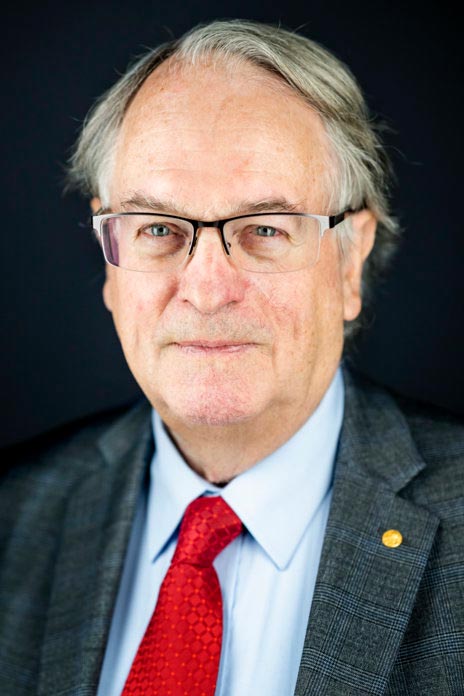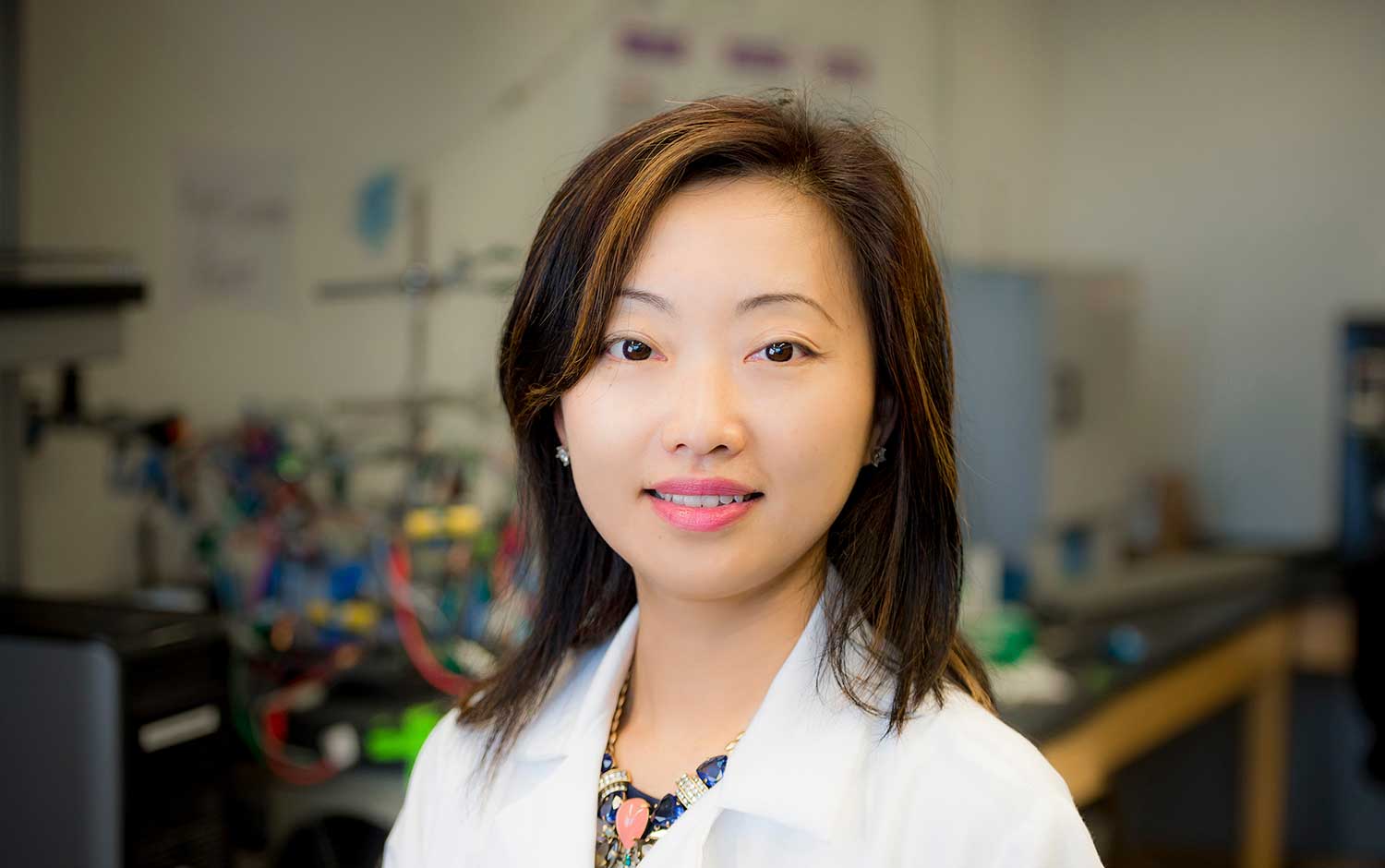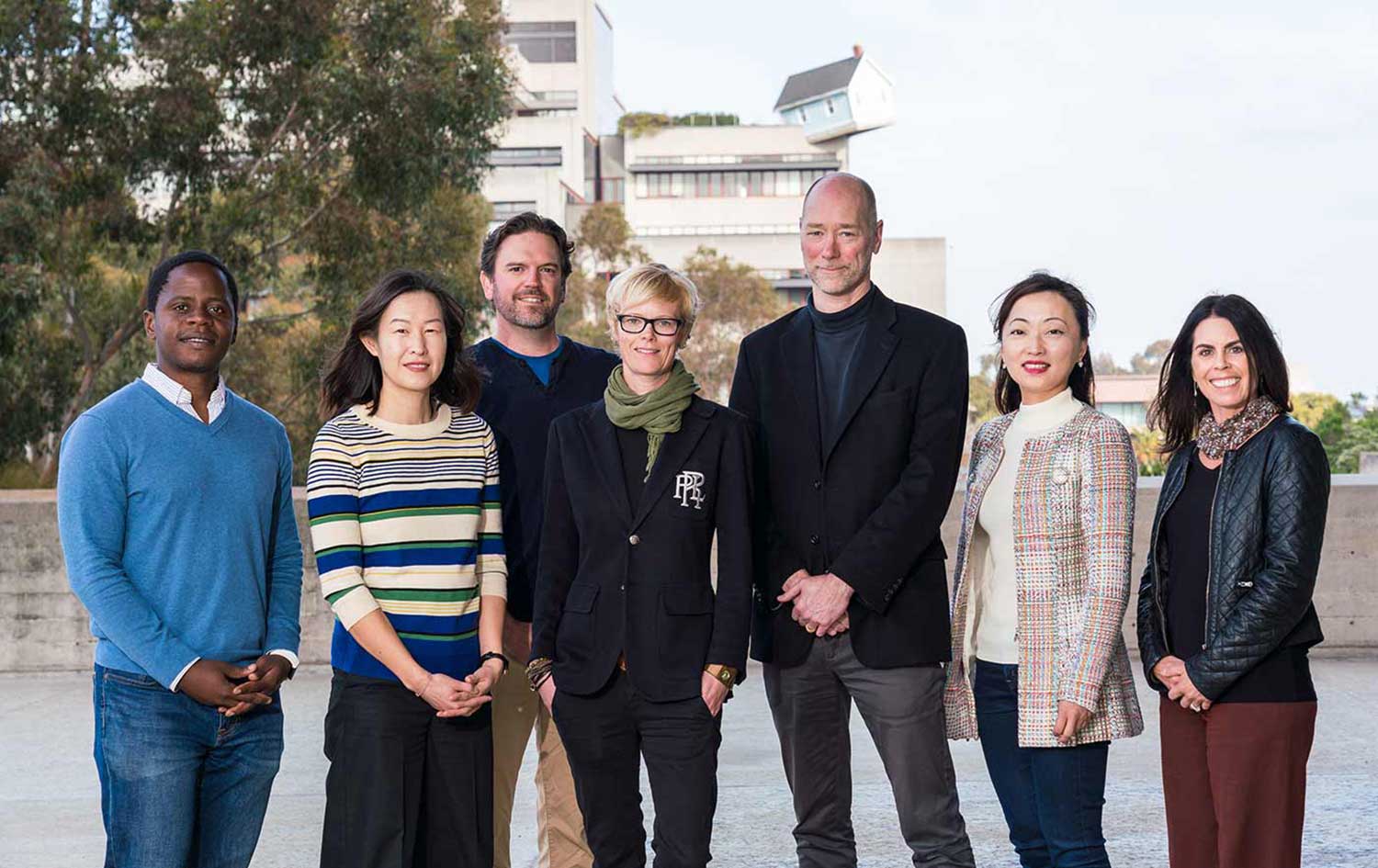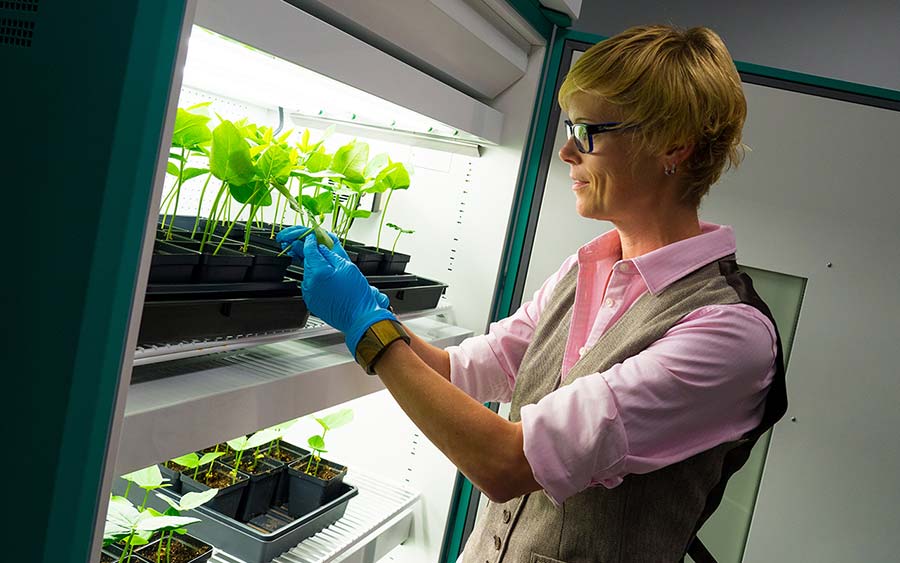
By:
- Ioana Patringenaru
Published Date
By:
- Ioana Patringenaru
Share This:
Nobel Laureate Helps Celebrate Launch of Institute for Materials Discovery and Design

Stanley Whittingham was one of the recipients of the 2019 Nobel Prize in Chemistry for his work on Lithium ion batteries. He gave the keynote speech for the Institute for Materials Discovery and Design.
Climate change, public health and equal access to food and water are some of the biggest challenges facing humanity—and materials science can help provide solutions for them all. That was the message researchers shared at an event held Sept. 29 celebrating the launch of the Institute for Materials Discovery and Design at UC San Diego featuring a keynote address by Nobel Laureate Stanley Whittingham.
“We owe it to the next generation to help solve some of the world’s most pressing problems,” said Whittingham, who was awarded a 2019 Nobel Prize in Chemistry for his work as co-inventor of lithium-ion batteries. “Materials science can help humanity.”
The Institute for Materials Discovery and Design (IMDD) is a collaboration between the Jacobs School of Engineering and Division of Physical Sciences. Its goal is to leverage researchers’ cross-disciplinary expertise to discover, design and characterize advanced materials needed to address global challenges. This materials work has applications in developing zero- and low-carbon energy and transportation systems; cost-effective healthcare solutions; advances in sustainability; and next-generation information technologies.
The IMDD is the ideal approach to do this kind of high-impact research because it brings together students from different disciplines and allows them to move between research groups in chemistry, physics, engineering and more, Whittingham also said.
“The most exciting research is done at the interface of different disciplines,” Whittingham said. “Science knows no boundaries.”
UC San Diego Chancellor Pradeep K. Khosla echoed this. “Cross-functional collaboration drives the success of our students, faculty and researchers across every division and every school of this university,” he said. “The work in materials science that is happening at UC San Diego is beyond innovative. It’s revolutionary. The IMDD will continue that tradition and accelerate collaboration, exploration and changemaking breakthroughs.”

Professor Shirley Meng, in the UC San Diego Department of Nanoengineering, is the director of the new institute.
Materials have always defined the ages of human history, first by name, then by implication, said IMDD Director Shirley Meng, who is also a professor in the Department of Nanoengineering at the Jacobs School. For example, the Industrial Revolution would not have been possible without coal and steel, nor the information age without semiconductors. It is time for researchers to discover and create the materials that will define the Anthropocene, she added. “We did not get out of the Stone Age because we ran out of stones,” said Meng.
Researchers at UC San Diego are uniquely positioned to do this because the campus, along with industry and government partners, have invested in people and cutting-edge tools for the past 15 years, Meng said. For example, UC San Diego has one of the highest resolution transmission electron microscopes in the world, which is still being used by researchers during the COVID-19 pandemic.
What’s more, the campus has always focused on taking discoveries from the lab into the real world. “Entrepreneurship is our DNA,” Meng said, noting that nearly 800 companies have been spun out of UC San Diego in its 60-year history.
One of Meng's former students, Jungwoo Lee, co-founded South 8 Technologies, a company that develops liquefied gas electrolytes for next-generation lithium batteries. Batteries fitted with this technology have many advantages including working at extreme temperatures, from the cold of space to the heat of Death Valley. “We are not letting something as simple as pressure get in the way of materials science innovation to power the future,” Lee said.
$18M NSF grant for a Materials Research Science and Engineering Center

The lead team that secured a $18M NSF grant for materials science at UC San Diego: from left: professors Tod Pascal, Andrea Tao, Jon Pokorski, Nicole Steinmetz, Michael Sailor, Shirley Meng and Stacey Brydges.
The IMDD’s research efforts are buttressed by an $18 million grant from the National Science Foundation, awarded in September of this year for the creation of a Materials Research Science and Engineering Center here on campus, said IMDD co-director Michael Sailor, who is a professor in the Division of Physical Sciences.
“We can harness computational power to design materials from the atom up,” Sailor said. “We can also harness tools used in biotechnology to develop new materials.”
The former MRSEC research effort is led by nanoengineering professors Andrea Tao and Tod Pascal; the latter by nanoengineering professors Nicole Steinmetz and John Pokorski.
Making materials from the ground up
“What if we could make any and every material that we ever wanted?” Pascal asked.
That is the goal he and fellow researchers, focusing on what is called predictive assembly, are working towards. Essentially, they are trying to better understand the fundamental energy landscape for small building blocks, figuring out how their surface chemistries and their shapes determine how and where they stick together. "Such detailed knowledge is critical," Pascal noted, "because it determines how these building blocks self-organize to form large scale, complex materials."
To gain this unprecedented insight, researchers will first use powerful supercomputers and quantum theory to learn about these materials. The predictions from these calculations will then be tested and validated by materials chemists and engineers working hand-in-hand with the theorists. "We have an amazing team of computational folks, working at the quantum to the mesoscopic level, people who are experts at manipulating the atomic structure of nanomaterials and characterizing these changes using high-resolution spectroscopy and microscopy. This is a one-stop shop for materials design and discovery,” Pascal added. By employing this scientific arsenal, researchers will be able to build materials that can adapt to their environment and materials with properties that change in time and in response to stimuli such as light.
“It’s going to revolutionize material science,” Pascal added.
Plant viruses become living materials

Nicole Steinmetz, a professor of nanoengineering, works with plant viruses to create new materials.
Meanwhile, research in living materials is using the tools of the biotechnology revolution, such as genetic engineering and synthetic biology, to build new classes of materials with new kinds of abilities. For Steinmetz, that means working with plants and plant viruses. These plant viruses are harvested and repurposed as nanoparticles that fire up the immune system in mammals to attack tumors and metastases. She is also investigating how to add electronic viruses to plant tissue to create plant cyborgs that can be used for sensing molecules. “Plant viruses are scalable,” she said. “When you need more, you grow more plants.”
Graduate program
Many of these research goals require training students to be the researchers of tomorrow, a task that will be handled by UC San Diego’s materials science and engineering graduate program, led by Prab Bandaru, a professor in the UC San Diego Department of Mechanical and Aerospace Engineering. The program includes about 100 faculty and 200 graduate students. “We are getting students together and giving them a common vocabulary,” Bandaru said.
Hayley Hirsch is one of those students and part of Meng’s research group.
“It is clear that there is immense passion for materials science advancement at UC San Diego,” said Hirsch when asked about the IMDD launch event. “Both the diversity of the people involved in IMDD and the resources it provides are a clear win for UC San Diego and the whole materials science field.”
Nobel Laureate Whittingham had a few words of advice for Hirsch and other graduate students: “Be willing to take risks,” he said. “What you really need are smart ideas.”
Share This:
You May Also Like
Stay in the Know
Keep up with all the latest from UC San Diego. Subscribe to the newsletter today.


